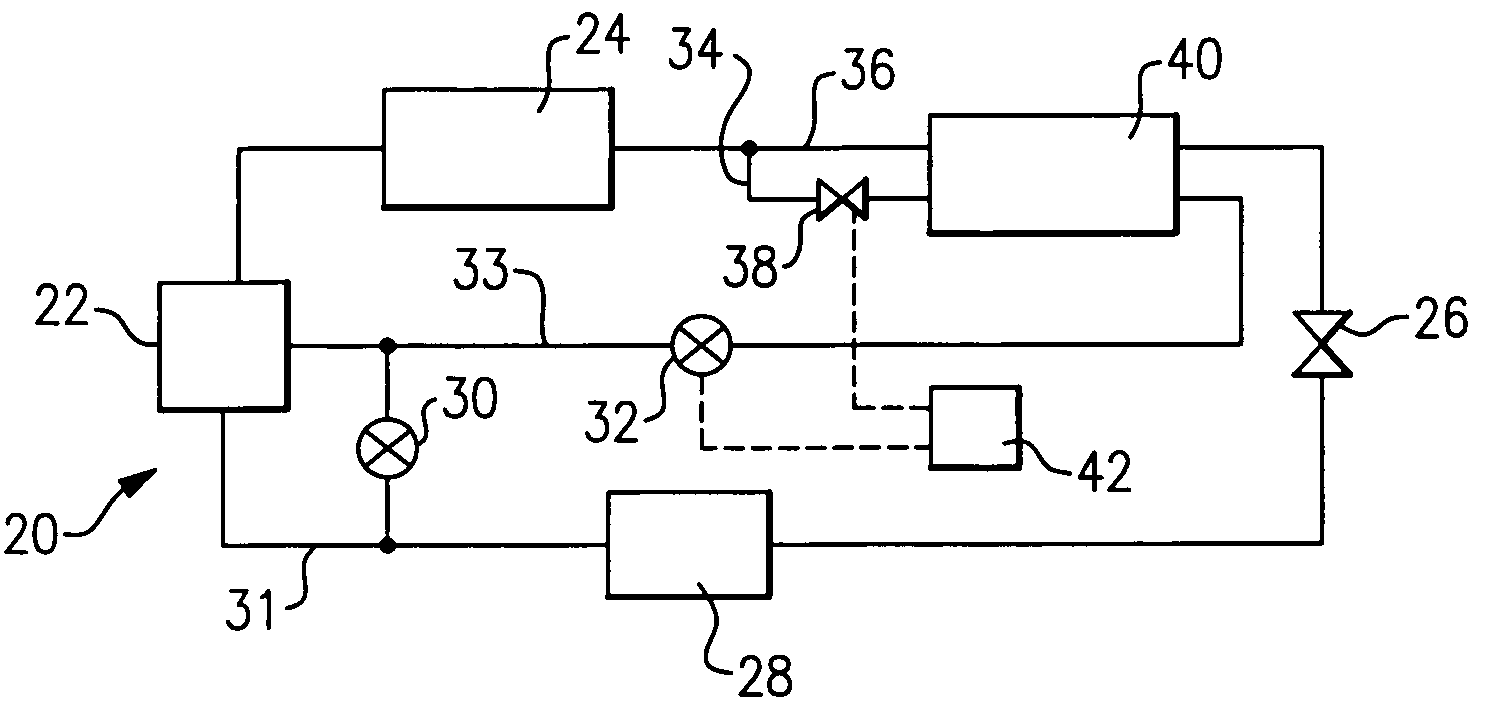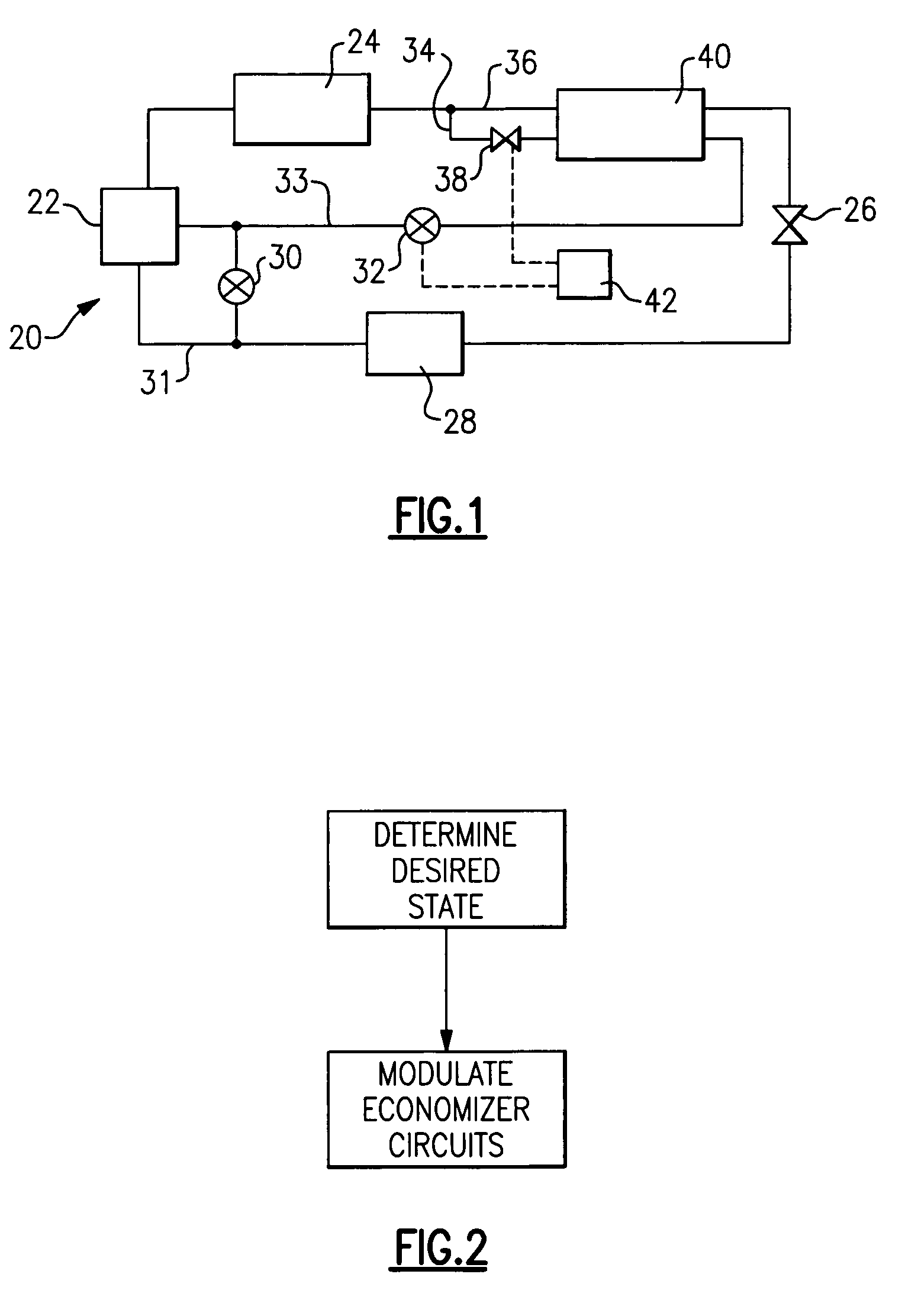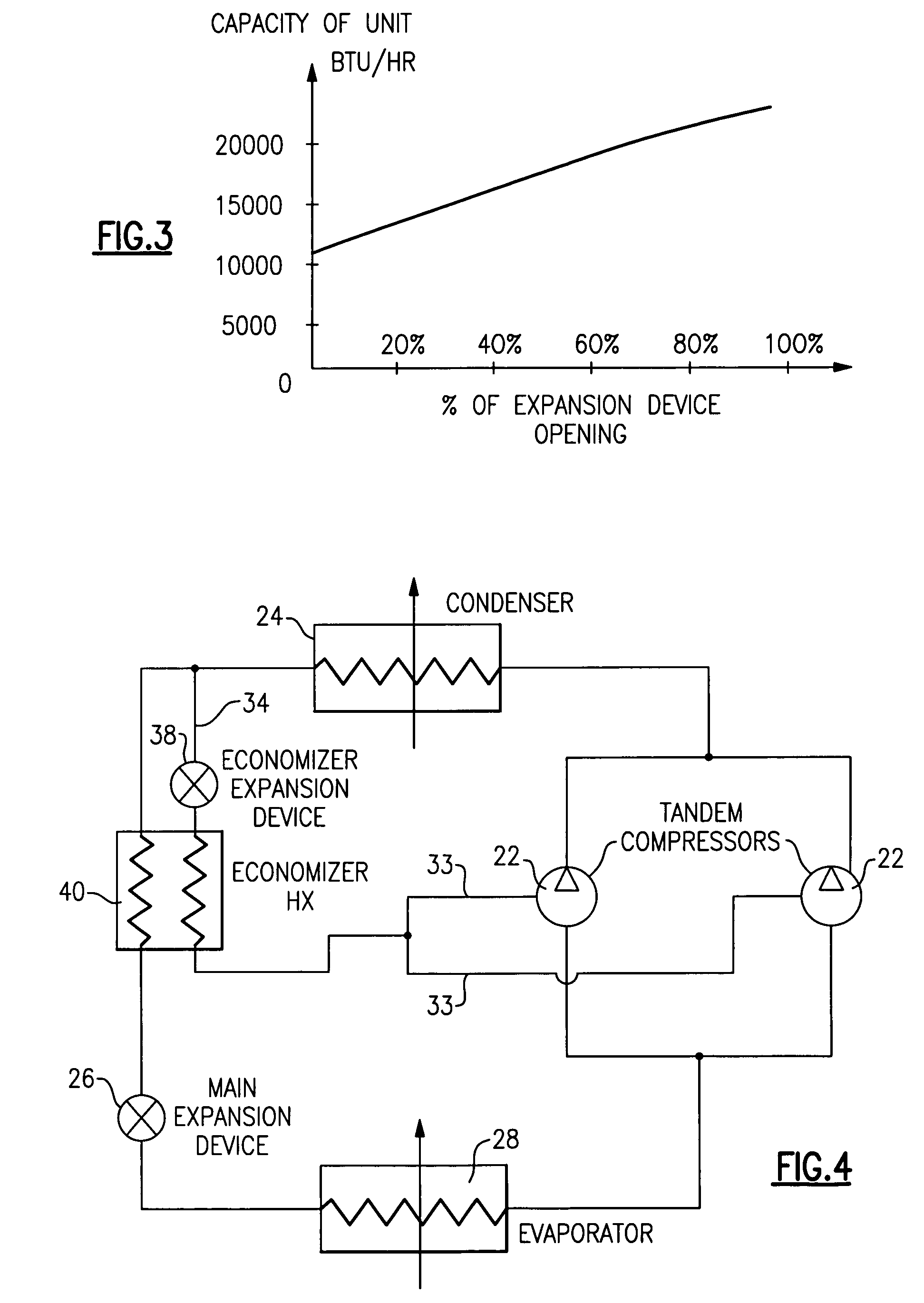Control scheme for multiple operating parameters in economized refrigerant system
a refrigerant system and control scheme technology, applied in refrigeration machines, lighting and heating apparatus, refrigeration safety arrangements, etc., can solve the problems of overall system efficiency, and low efficiency of evaporator performance, so as to reduce the amount of mass flow, and high mass flow
- Summary
- Abstract
- Description
- Claims
- Application Information
AI Technical Summary
Benefits of technology
Problems solved by technology
Method used
Image
Examples
Embodiment Construction
[0020]FIG. 1 shows a refrigerant cycle 20 having a compressor 22 delivering a refrigerant to a condenser 24. From condenser 24 the refrigerant passes to a main expansion device 26, and then to an evaporator 28. As is known, a bypass valve 30 may provide communication between a suction line 31, and an economizer return line 33. Economizer shutoff valve 32 may be placed on the return line 33. The refrigerant from the return line 33 enters the compressor 22 through intermediate port 44. A tap line 34 branches off from a main refrigerant flow in line 36 leading to the main expansion device 26. Tap line 34 passes through an auxiliary or economizer expansion device 38. The tapped refrigerant, after having passed through the expansion device or valve 38, passes through an economizer heat exchanger 40 along with the main refrigerant flow line 36. While the tapped and main refrigerant flows are illustrated, for simplicity, flowing in a common direction, it is preferred that the two flows hav...
PUM
 Login to View More
Login to View More Abstract
Description
Claims
Application Information
 Login to View More
Login to View More - R&D
- Intellectual Property
- Life Sciences
- Materials
- Tech Scout
- Unparalleled Data Quality
- Higher Quality Content
- 60% Fewer Hallucinations
Browse by: Latest US Patents, China's latest patents, Technical Efficacy Thesaurus, Application Domain, Technology Topic, Popular Technical Reports.
© 2025 PatSnap. All rights reserved.Legal|Privacy policy|Modern Slavery Act Transparency Statement|Sitemap|About US| Contact US: help@patsnap.com



